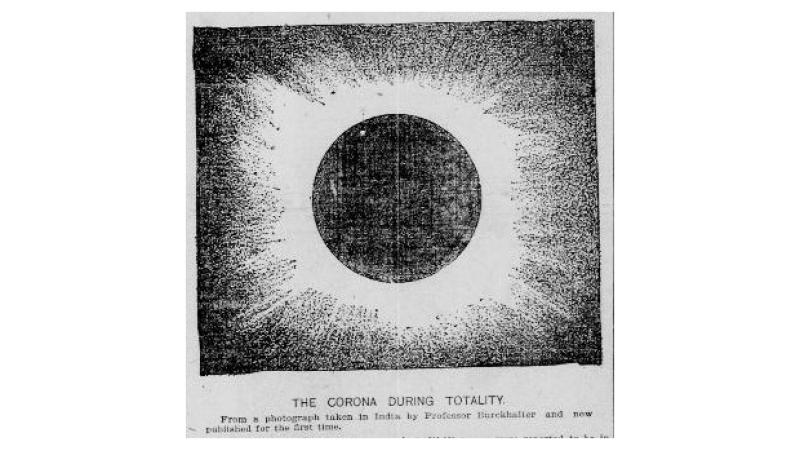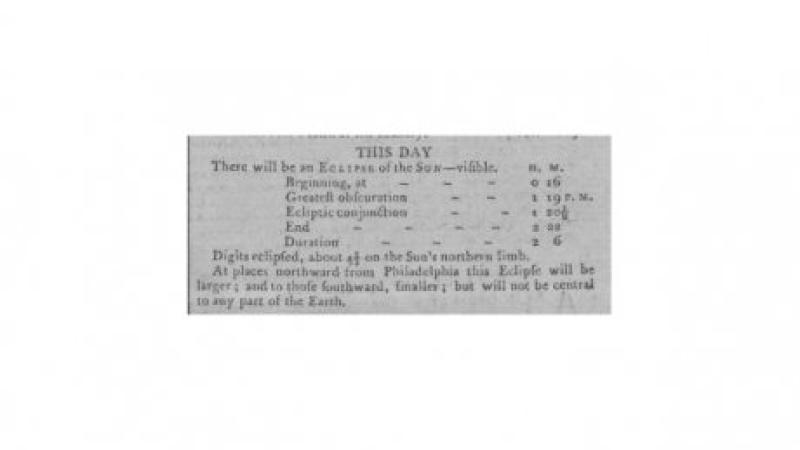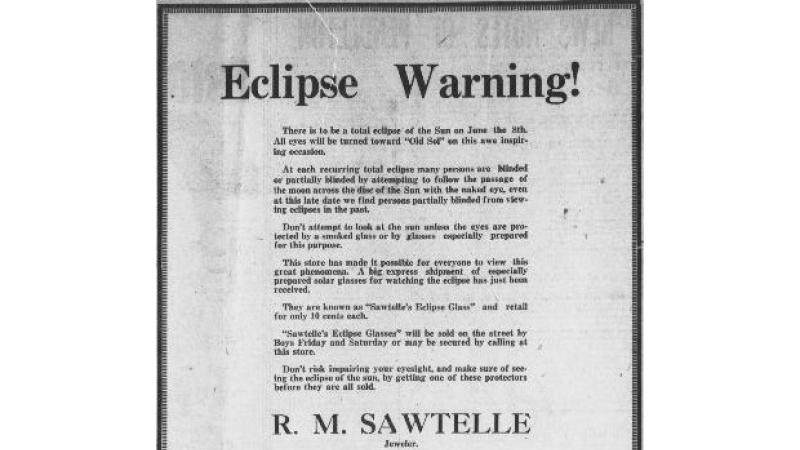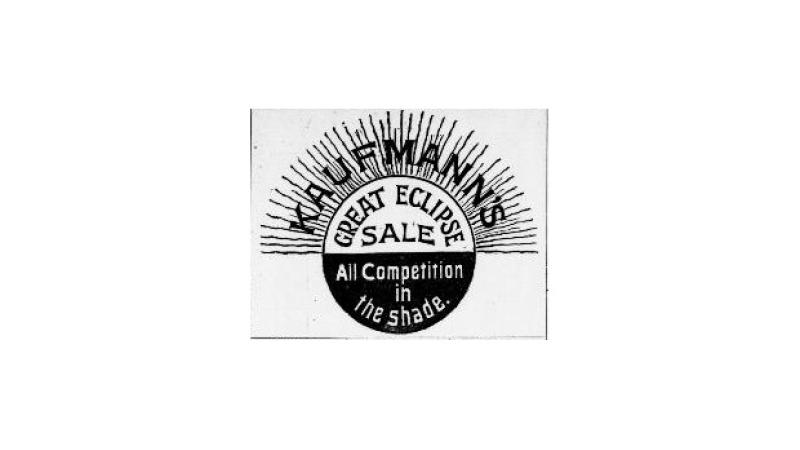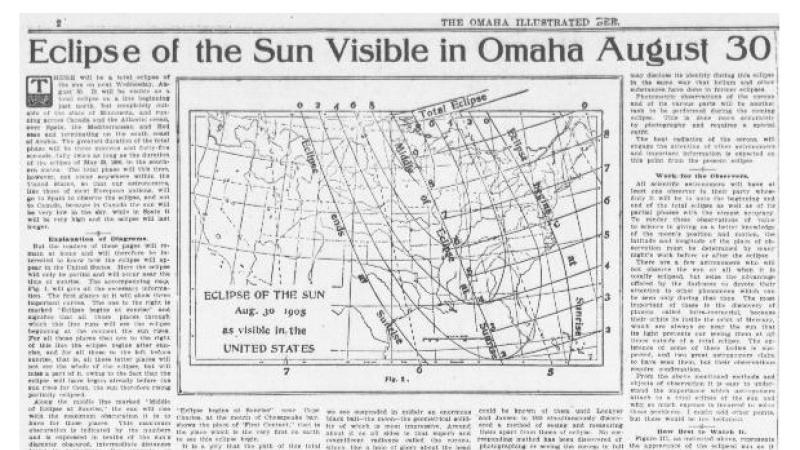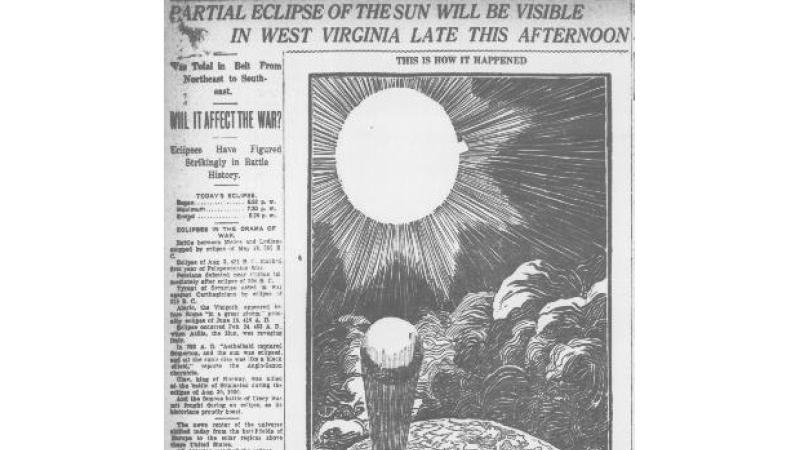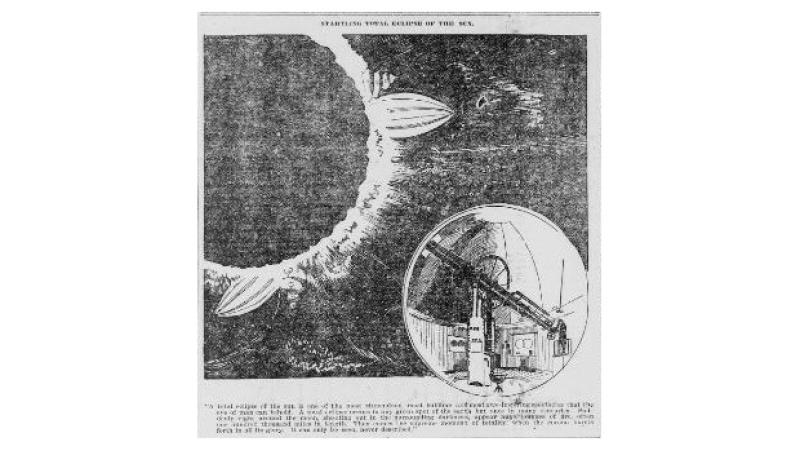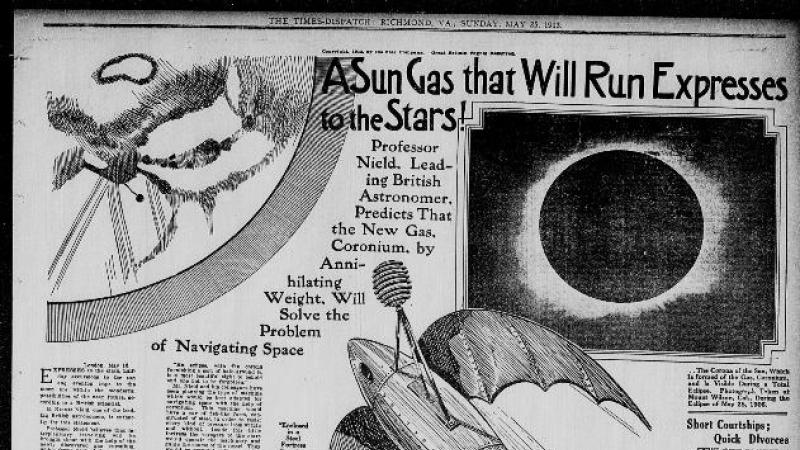Total Eclipse of the News

"Are the Stars Really Where We See Them?" The Washington Times (Washington, DC) September 10, 1922.
Courtesy of Chronicling America: Historic American Newspapers. Library of Congress. Image Provided by Library of Congress. http://chroniclingamerica.loc.gov/lccn/
sn84026749/1922-09-10/ed-1/seq-50/

"Are the Stars Really Where We See Them?" The Washington Times (Washington, DC) September 10, 1922.
Courtesy of Chronicling America: Historic American Newspapers. Library of Congress. Image Provided by Library of Congress. http://chroniclingamerica.loc.gov/lccn/
sn84026749/1922-09-10/ed-1/seq-50/
For a few moments on August 21, 2017, the moon will completely obscure the sun over the continental United States, causing a total solar eclipse. In the “path of totality” from Oregon to South Carolina, the world will darken temporarily, and the sun’s “corona” (a ring of visible atmosphere) will appear, stark and bright against the moon’s shadow.
We took a look in Chronicling America, the open access database of historic newspapers created by the National Endowment for the Humanities and the Library of Congress, to see what Americans through history have thought of solar eclipses. Newspapers from Washington to Minnesota to Virginia have called the eclipse a “sublime spectacle,” mentioned its “pearly corona” and “scarlet chromosphere,” and noted that the phenomenon is “so rare, so striking, and so important” that people of all classes were interested.
Total solar eclipses are rare. Whether you’ll be in the path of the eclipse this time or not, you can think of people in past generations gazing up at the heavens with fear, excitement, and curiosity.
Observation – Throughout recorded history, societies have noted eclipses, though only more recently have humans been able to predict their occurrence with any accuracy. Early American newspapers publicized eclipses, like this 1790 announcement in the Gazette of the United States [New York, New York] and this one from the North Carolina Standard in 1836.
Fear, Excitement, and Everything in Between – Eclipses are often imbued with power, inspiring fear and excitement. An 1869 article in the Marshall County Republican [Plymouth, Indiana] reported ancient feelings that eclipses “portended evil” and people who “were in great fear and trepidation until the sun had assumed its wonted brightness.” Since eclipses could now be announced, the paper noted, “The world is getting wiser if not better.” An 1886 account of a large team of observers from the Harvard observatory in Grenada includes an account of a “crowd of about 300” observing the eclipse, with some people running and hiding and howling, because of the “numerous superstitions afloat before the eclipse, such as that a portion of the island was to disappear.” Even a 1918 article in the West Virginian [Fairmont, West Virginia] asked, “Will it affect the war?” suggesting that “Eclipses have figured strikingly in battle history.”
Confused Birds – Do animals act weirdly during an eclipse? An 1897 story in the Herald [Los Angeles, California] reported that “flowers close, fowls hasten to roost, cattle low, and the whole animal kingdom is seized with a sudden fright.” In 1905, an article in the Omaha Daily Bee [Omaha, Nebraska] noted that as the light becomes ashen, “Animals become puzzled, fowls retire to rest and all nature seems to pause in presence of the great portent.” NASA confirms that animals—especially birds—really do change their behavior during a solar eclipse—especially a total one.
Eclipse Chasers – Over time, scientific advances made possible more accurate prediction of eclipses. Scientists and citizens called “eclipse chasers” traveled far and wide to view the phenomenon—including women astronomers. In 1886, an article in the Seattle Post-Intelligencer [Seattle, Washington] reported on Mrs. Walter Maunder’s travel to India to take photographs of the eclipse. Mabel Loomis Todd, a late 19th-century eclipse chaser from Massachusetts, was among a dozen women astronomers observing the eclipse that year; a 1900 Topeka State Journal [Topeka, Kansas] articlethought their involvement proof that “it is a fallacy to assume that women can never succeed in the exact sciences.”
Safe to See? – Observers throughout history realized that it was not safe to look directly at the sun, even during an eclipse. This 1918 ad from the East Oregonian [Pendleton, Oregon] urged readers to purchase “Sawtelle’s Eclipse Glass” to view the eclipse safely. Since then, scientists have developed more information and equipment for viewing a solar eclipse safely.
The Science of Things – Twentieth-century American newspapers touted scientific discoveries arising from the eclipse. A 1905 article in the Omaha Daily Bee [Omaha, Nebraska] noted the “numerous and important” scientific uses for an eclipse, and in the same year Marshalltown, Iowa’s Evening Times-Republican reported on the “exodus of scientists to points of entire obscuration” to measure the eclipse. A 1913 piece in the Times Dispatch [Richmond, Virginia] reported on the discovery of a new element “Coronium” (later discredited), which one scientist predicted would “solve the problem of navigating space” by “annihilating weight.”
Will you be able to view the eclipse? Whether you are in its path or not, NASA suggests creating a time capsule to be opened on April 8, 2024, the date of the next total solar eclipse over the continental United States. If, as they suggest, you include a copy of your daily newspaper, perhaps it will someday be included in Chronicling America as well!
